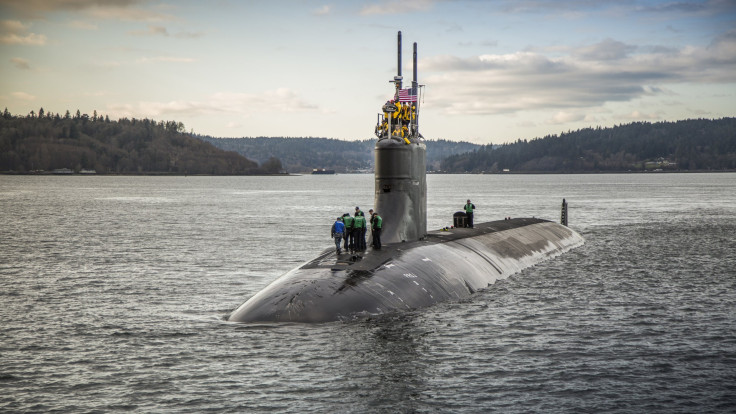US Submarine Suffered Collision At One Of The 'Most Difficult Undersea Environments': Report
KEY POINTS
- The Navy has not given any details about what caused the underwater collision
- The region has constantly shifting contours that can surprise any submarine crew
- The sub uses passive sonars, forcing it to use other devices to detect objects in its path
USS Connecticut, the Seawolf-class nuclear-powered submarine that hit an underwater object in the South China Sea on Oct. 2, was reportedly operating in "one of the world's most difficult undersea environments."
Analysts say the seabed in the region has "constantly shifting contours that can surprise any submarine crew" and is "filled with noise from ships above," reported CNN.
According to a statement from the U.S. Pacific Fleet, a number of sailors onboard USS Connecticut were injured in the accident but none were life-threatening. It's unclear what the submarine may have hit.
These subs are said to be exceptionally quiet, fast, well-armed, and equipped with advanced sensors.
However, the conditions in the South China Sea can be a challenge even for the sub's sophisticated sensors. "It could have been an object small enough to be missed by sonars in a noisy environment," Alessio Patalano, professor of war and strategy at King's College in London, told CNN.
Reports said the sub was operating in the waters around the South China Sea where the United States and five other nations have been carrying out military drills led by the United Kingdom's Carrier Strike Group 21.
According to the U.S. National Oceanic and Atmospheric Administration, naval vessels use "passive sonar" to detect objects in the water around them. These sonars only detect sounds coming towards it unlike "active sonars." Though the passive sonar enables the submarines to stay stealthy, it also means that the sub has to depend on other devices to detect objects in its path.
The South China Sea being a busy ship route, the surface of the sea can be very noisy and hence mask potential dangers to subs underneath the surface.
"Depending on the place the incident occurred, noise interference of sorts (usually from the traffic above) might have affected sensors, or indeed operators' use of them," Patalano added.
A very poor acoustic environment also creates problems. Carl Schuster, a former U.S. Navy captain and past director of operations at the US Pacific Command's Joint Intelligence Center, told CNN that the "ambient noise from currents passing between the islands and inconsistent water conditions affect acoustic reception."
Schuster added that the seabed here is in a state of "slow but inexorable change." "It is an area that requires constant bottom contour mapping. You can hit an uncharted underwater mountain down there. That's why the countries in that region, the US and China are constantly surveying and patrolling them," he added.
Connecticut, one of the three Seawolf-class submarines, was commissioned in 1998. It is powered by a single nuclear reactor, and crewed by 140 sailors.

© Copyright IBTimes 2025. All rights reserved.




















